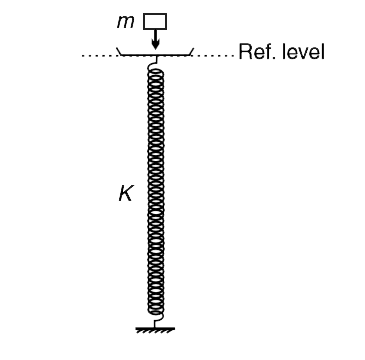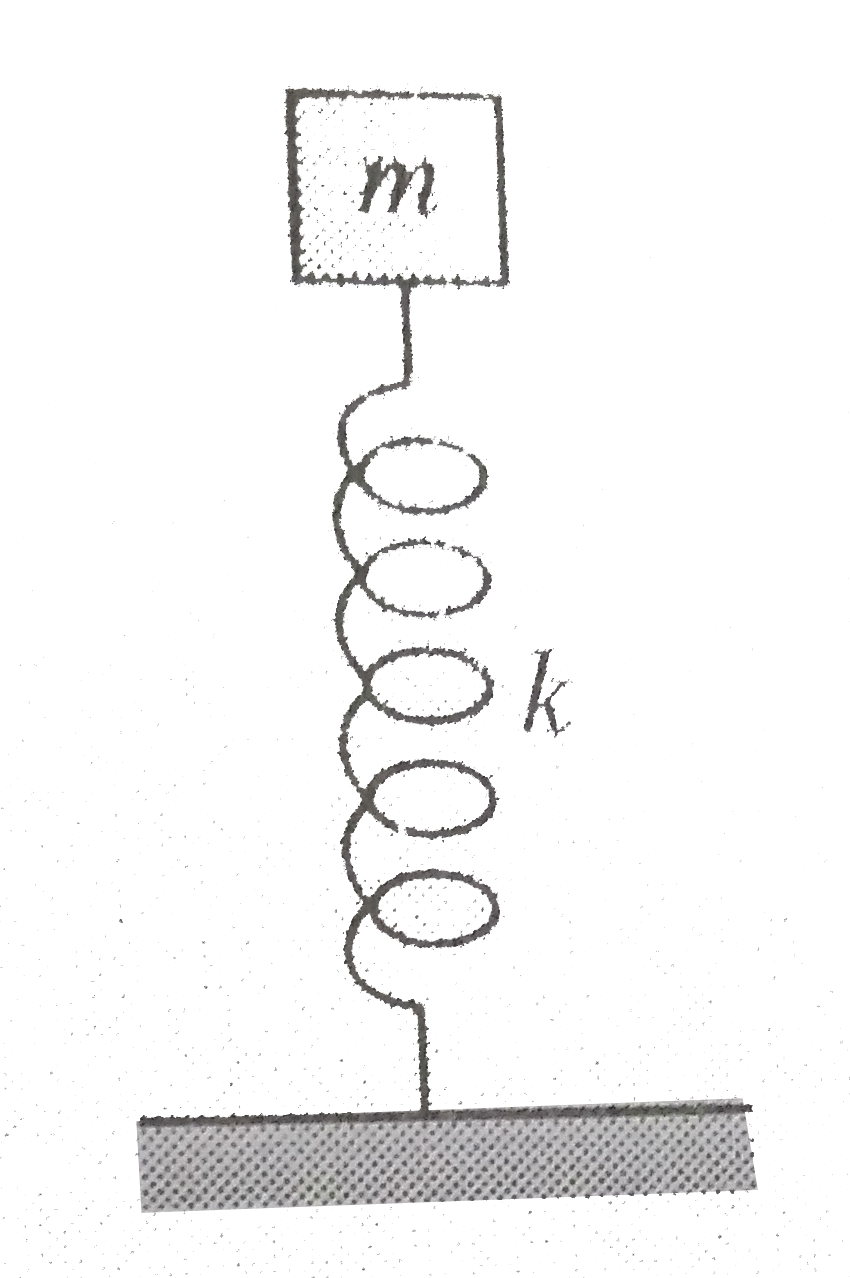A block hangs freely from the end of a spring. A boy then slowly pushes the block upwards so that the spring becomes strain free. The gain in gravitational potential energy of the block during this process is not equal to
The work done by · the boy , against the gravitational force acting on the block.
The loss of energy stored in the spring minus the work done by the tension in the spring
The work done on tlie block by the boy plus the loss of energy stored in the spring.
The work done on the block by the boy minus the work done by the tension in the spring plus the loss of energy stored in the spring.
The correct Answer is:C
Step by step video, text & image solution for A block hangs freely from the end of a spring. A boy then slowly pushes the block upwards so that the spring becomes strain free. The gain in gravitational potential energy of the block during this process is not equal to by Physics experts to help you in doubts & scoring excellent marks in Class 11 exams.
Updated on:21/07/2023Topper's Solved these Questions
- WORK AND ENERGYBOOK - ANURAG MISHRACHAPTER - WORK AND ENERGYEXERCISE - Level 2
18 Videos
- WORK AND ENERGYBOOK - ANURAG MISHRACHAPTER - WORK AND ENERGYEXERCISE - Level 3
34 Videos
- WORK AND ENERGYBOOK - ANURAG MISHRACHAPTER - WORK AND ENERGYEXERCISE - Eample
47 Videos
- UNIT AND DIMENSIONSBOOK - ANURAG MISHRACHAPTER - UNIT AND DIMENSIONSEXERCISE - Matching Type Problem
4 Videos
Similar Questions
In figure a spring with k=168N/m is in its relaxed length and is at the top of a frictionless incline of angle θ=37∘. The lower end of the incline is at distance D = 1 m from the end of the spring. A small blcok of mass 2 kg is pushed against the spring until the spring is compressed by 0.2 m and released from rest.

What is the speed of the block at the instant the spring returns to its relaxed length (which is when the block loses contact with the spring)?
View SolutionA light spring is vertical and a mass less pan is attached to it. Force constant of the spring is k. A block of mass m is gently dropped on the pan. Plot the variation of spring potential energy, gravitation potential energy and the total potential energy of the system as a function of displacement (x) of the block. For gravitational potential energy take referece level to the initial postion of the pan.

View Solution
Knowledge Check
A Weight W suspeded from a spring is raised through a height h so that the spring becomes just slack .If E was the energy of the stretched spring , then the gain in gravitational potential energy is
AWhBWh+ECWh−EDEWhen a small block is suspended at the lower end of an elastic steel wire hanging form the celling, there is a loss in gravitational potential energy (U) of earth-block system then
Athe lost energy is irrecoverableBthe entire can be recoveredCthe lost energy which is irrecoverable is 'U'Dthe lost energy which is irrecoverable is U/2One end of an unstretched vertical spring is attached to the ceiling and an object attached to the other end is slowly lowered to its equilibrium position. If S is the gain in spring energy and G is the loss in gravitational potential energy in the process, then
A(a) S=GB(b) S=2GC(c) G=2SD(d) None of the above
A block of mass 2 kg is connect to an ideal spring and the system is placed on a smooth horizontal surface. The spring is pulled to move the block and at an instant the speed of end A of the spring and speed of the block were measured to be 6 m/s and 3 m/s respectively. At this moment the potential energy stored in the spring is increasing at a rate of 15 J/s. Find the acceleration of the block at this instant.

View SolutionA block of mass m held touching the upper end of a light spring of force constant K as shown in figure. Find the maximum potential energy stored in the spring if the block is released suddenly on the spring.

View SolutionFigure. shows a rough horizontal plane which ends in a vertical wall, to which a spring is connected, having a force constant k. Initially spring is in its relaxed state. A block of mass m starts with an initial velocity u towards the spring from a distance l0 from the end of spring shown. When block strikes at the end ofthe spring, it compresses the spring and comes to rest. Find the maximum compression in the spring. The friction coefficient between the block and the floor is μ..

View SolutionOne end of an unstretched vertical spring is attached to the ceiling and an object attached to the other end is slowly lowered to its eqilibrium position. If S be gain in spring energy and G be loss in gravitational potential energy in the process, then
View SolutionTwo blocks of masses m1 and m2 are kept on a smooth horizontal table as shown in figure. Block of mass m1 (but not m2 is fastened to the spring. If now both the blocks are pushed to the left so that the spring is compressed a distance d. The amplitude of oscillatin of block of mass m1 after the system is released is

View Solution
